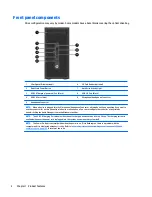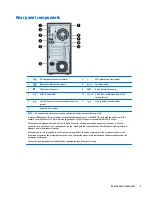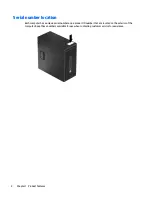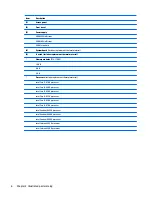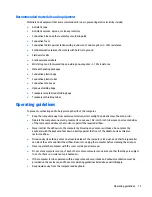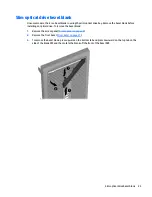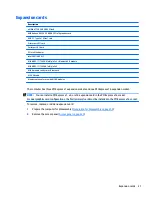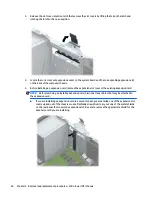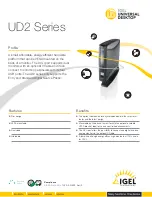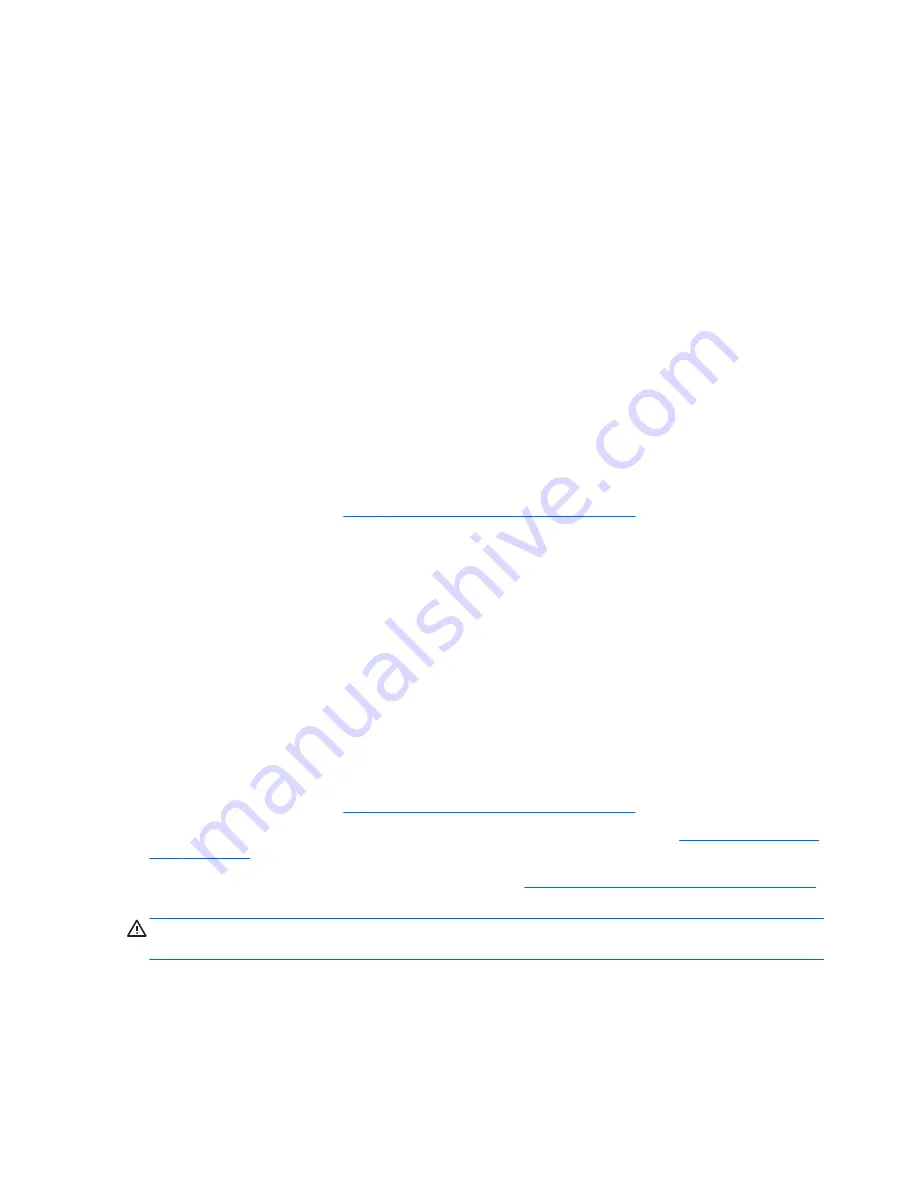
●
Never cover the ventilation slots on the monitor with any type of material.
●
Install or enable power management functions of the operating system or other software, including
sleep states.
Routine care
General cleaning safety precautions
1.
Never use solvents or flammable solutions to clean the computer.
2.
Never immerse any parts in water or cleaning solutions; apply any liquids to a clean cloth and then use
the cloth on the component.
3.
Always unplug the computer when cleaning with liquids or damp cloths.
4.
Always unplug the computer before cleaning the keyboard, mouse, or air vents.
5.
Disconnect the keyboard before cleaning it.
6.
Wear safety glasses equipped with side shields when cleaning the keyboard.
Cleaning the Computer Case
Follow all safety precautions in
General cleaning safety precautions on page 14
before cleaning the computer.
To clean the computer case, follow the procedures described below:
●
To remove light stains or dirt, use plain water with a clean, lint-free cloth or swab.
●
For stronger stains, use a mild dishwashing liquid diluted with water. Rinse well by wiping it with a cloth
or swab dampened with clear water.
●
For stubborn stains, use isopropyl (rubbing) alcohol. No rinsing is needed as the alcohol will evaporate
quickly and not leave a residue.
●
After cleaning, always wipe the unit with a clean, lint-free cloth.
●
Occasionally clean the air vents on the computer. Lint and other foreign matter can block the vents and
limit the airflow.
Cleaning the keyboard
Follow all safety precautions in
General cleaning safety precautions on page 14
before cleaning the keyboard.
To clean the tops of the keys or the keyboard body, follow the procedures described in
Cleaning the Computer
Case on page 14
.
When cleaning debris from under the keys, review all rules in
General cleaning safety precautions on page 14
before following these procedures:
CAUTION:
Use safety glasses equipped with side shields before attempting to clean debris from under the
keys.
●
Visible debris underneath or between the keys may be removed by vacuuming or shaking.
●
Canned, pressurized air may be used to clean debris from under the keys. Caution should be used as too
much air pressure can dislodge lubricants applied under the wide keys.
14
Chapter 3 Routine care, SATA drive guidelines, and disassembly preparation



